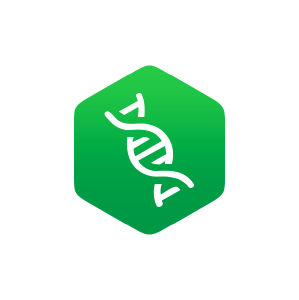The goal of this tutorial is for you to learn about the scientific method and be able to apply that knowledge to problems.

bio.libretexts.org
1. Description of the Scientific Method
One of the goals of science is to come up with explanations about how the natural world (all the things we see or experience) functions. Although there are other systems for understanding and explaining the world around us (such as religion and traditional beliefs) science differs from these in that scientific explanations are based on laws of nature. Laws of nature are patterns in nature that are
objective (do not depend on faith, authority, or opinion), are
testable (can be demonstrated with experiments), and are
consistent (the same conditions produce the same results).
The 4 Steps of the Scientific Method
To learn about the natural world, scientists use a four step procedure called the
scientific method. The four steps of the scientific method are listed below. To help illustrate the scientific method, an example that an entomologist (a biologist who specializes in insects) might use is given in italics below each step.
Step 1: Observations & Questions
Observe something in the natural world and ask a question about how it works. The part of the natural world that is observed and investigated is usually the area that the scientist specializes in. An entomologist for example, would ask questions about how insects function.
“The life cycle of a fruit fly is about 30 days (at 29 degrees Celsius). How do changes in temperature affect the life cycle of a fruit fly?”
Step 2: Hypothesis
Make a hypothesis (an educated guess) which attempts to answer the question. A useful hypothesis is a
testable statement.
“Decreasing the temperature of a fruit fly's environment will increase the time it takes the fruit fly to complete its life cycle.”
Step 3: Experiment
Design and carry out an experiment that is capable of testing the hypothesis. In other words, the experiment must be designed so that it will produce results that either clearly support or clearly falsify (disprove) the hypothesis. It helps to use “If-Then” predictions based on your hypothesis.
Designing a Good Experiment
The most challenging part of the scientific method is usually the third step, designing and carrying out an experiment to test the hypothesis. A well-designed experiment should include all of the following characteristics:
1. An independent variable. The independent variable is the part of the experiment that the scientist changes or manipulates to see what effect occurs.
“The temperature is the independent variable, since that is what the experiment changes to see its effect.”
2. A dependent variable. The dependent variable is the part of the experiment that changes because of the change in the independent variable. In other words, the dependent variable is the effect that occurs from changing the independent variable.
“The length of the fruit flies' life cycle is the dependent variable, since the time of development is expected to change because of the temperature.”
“Place 100 fruit flies at 18 degrees Celsius for one generation. Also place 100 fruit flies at 29 degrees Celsius for one generation. If the hypothesis is correct, then the fruit flies that develop at 18 degrees Celsius will complete their life cycle after those fruit flies that are placed at 29 degrees Celsius."
Step 4: Analyze Results and State Conclusions
Reject the hypothesis if the results are not consistent with the hypothesis or accept the hypothesis as possibly true if the results are consistent with the hypothesis. Notice that the hypothesis is not “proven to be true” even if the results do support it. This is because there may be explanations other than the hypothesis for the experimental result.
For example, if the fruit flies placed at 18 degrees Celsius do develop slower, it may be that their food is not as soft making it more difficult for the fruit flies to eat at the lower temperature, causing them to eat less food and thus grow slower.
If the experimental results do not support the hypothesis, the hypothesis may be modified and additional experiments may be done to test the new or revised hypothesis.



